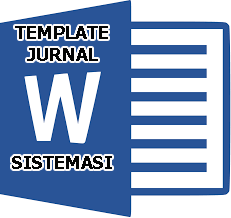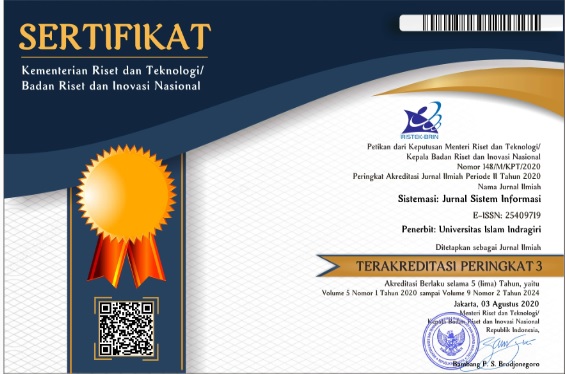Design and Implementation of an ETL Pipeline for Prospective Student Data Analysis in Higher Education Admissions
Abstract
Keywords
Full Text:
PDFReferences
Badan Pusat Statistik, “Jumlah Perguruan Tinggi1, Dosen, dan Mahasiswa2 (Negeri dan Swasta) di Bawah Kementerian Pendidikan, Kebudayaan, Riset, dan Teknologi Menurut Provinsi, 2022,” 2023.
C. M. Annur, “Jumlah Perguruan Tinggi di Indonesia Capai 3.107 Unit pada 2022, Mayoritas dari Swasta,” 2023. Accessed: Jul. 03, 2024. [Online]. Available: https://databoks.katadata.co.id/datapublish/2023/03/01/jumlah-perguruan-tinggi-di-indonesia-capai-3107-unit-pada-2022-mayoritas-dari-swasta
B. Williamson, “Making Markets Through Digital Platforms: Pearson, Edu-Business, and the (e)Valuation of Higher Education,” Critical Studies in Education, Vol. 62, no. 1, pp. 50–66, 2021.
S. Sellar and A. Hogan, Pearson 2025: Transforming Teaching and Privatising Education Data. Education International, 2019.
I. Fauzi, M. Rachmawati, and A. Aziz, “Pelatihan Internet Marketing dalam Upaya meningkatkan Softskill Kewirausahaan pada Siswa SMK Bhakti Nusantara Salatiga,” Abdi Makarti, Vol. 1, No. 1, pp. 34–48, 2022, Accessed: Sep. 02, 2024. [Online]. Available: https://jurnal.stieama.ac.id/index.php/abdimakarti/article/view/265/0
M. A. Shareef, K. K. Kapoor, B. Mukerji, R. Dwivedi, and Y. K. Dwivedi, “Group Behavior in Social Media: Antecedents of Initial Trust Formation,” Comput Human Behav, Vol. 105, No. 106225, 2020, Accessed: May 02, 2024. [Online]. Available: https://www.sciencedirect.com/science/article/abs/pii/S0747563219304443
J. R. Saura, “Using Data Sciences in Digital Marketing: Framework, Methods, and Performance Metrics,” Journal of Innovation and Knowledge, Vol. 6, No. 2, pp. 92–102, Apr. 2021, Accessed: Feb. 12, 2025. [Online]. Available: https://www.sciencedirect.com/science/article/pii/S2444569X20300329
A. T. Rosário and J. C. Dias, “How has Data-Driven Marketing Evolved: CHALLENGES and Opportunities with Emerging Technologies,” International Journal of Information Management Data Insights, Vol. 3, No. 2, Nov. 2023.
J. R. Saura, Advanced Digital Marketing Strategies in a Data-Driven era. IGI Global, 2021. doi: 10.4018/978-1-7998-8003-5.
N. Akbar, “Perancangan SPK Tentang Keterampilan Mahasiswa dengan Metode SAW,” Rabit : Jurnal Teknologi dan Sistem Informasi Univrab, Vol. 8, No. 1, pp. 105–112, Jan. 2023, doi: 10.36341/rabit.v8i1.3033.
H. Nurrifqi, F. Fikrillah, and D. Kurniadi, “Rekomendasi Pemilihan Program Studi menggunakan Algoritma Naïve Bayes,” Jurnal Algoritma, Vol. 20, No. 1, pp. 42–49, 2023, [Online]. Available: https://jurnal.itg.ac.id/
W. Villegas-Ch, X. Palacios-Pacheco, and S. Luján-Mora, “A Business Intelligence Framework for Analyzing Educational Data,” Sustainability (Switzerland), Vol. 12, No. 14, pp. 1–21, Jul. 2020, doi: 10.3390/su12145745.
W. Vicente-Ramos and L. M. Cano-Torres, “The Effect of Digital Marketing on the Management of Relationships with University Students in Times of Covid-19,” International Journal of Data and Network Science, Vol. 6, No. 1, pp. 59–66, Dec. 2022, doi: 10.5267/J.IJDNS.2021.10.004.
N. S. Makrydakis, “The Role of Digital Marketing in Public Higher Education Organizations in Attracting Younger Generations,” Expert Journal of Marketing, Vol. 9, No. 1, pp. 28–38, 2021.
W. M. Lim, T. W. Jee, and E. C. De Run, “Strategic Brand Management for Higher educatIon Institutions with Graduate Degree Programs: Empirical Insights from the Higher Education Marketing Mix,” Journal of Strategic Marketing, Vol. 28, No. 3, pp. 225–245, Apr. 2020, doi: 10.1080/0965254X.2018.1496131.
C. Van der Putten, “Transforming Data Flow: Generative AI in ETL Pipeline Automatization,” Politecnico di Torino, 2024.
H. Ashok, S. Ayyasamy, A. Ashok, and V. Arunachalam, “E-business Analytics through ETL and Self- Service Business Intelligence Tool,” in Proceedings of the Second International Conference on Inventive Research in Computing Applications (ICIRCA-2020), IEEE, 2020, pp. 747–751.
S. Shankar Bhosale, Y. Kumar Sharma, S. S. Bhosale, Y. K. Sharma, F. Kurupkar, and S. Jagdishprasad Jhabarmal, “Role of Business Intelligence in Digital Marketing,” Int J Adv Innov Res, Vol. 7, No. 1, pp. 113–116, Mar. 2020, [Online]. Available: https://www.researchgate.net/publication/339676330
Q. Li, P. Duffy, and Z. Zhang, “A Novel Multi-Dimensional Analysis Approach to Teaching and Learning Analytics in Higher Education,” Systems, Vol. 10, No. 4, Aug. 2022, Accessed: Dec. 19, 2024. [Online]. Available: https://www.mdpi.com/2079-8954/10/4/96
A. A. Yulianto, “Study on Data Warehouse System for Supporting Decision Making in the Higher Education Institution (HEI) in Indonesia,” Kanazawa University, 2020.
A. A. Yulianto and Y. Kasahara, “Data Warehouse System for Multidimensional Analysis of Tuition Fee Level in Higher Education Institutions in Indonesia,” IJACSA) International Journal of Advanced Computer Science and Applications, Vol. 11, No. 6, pp. 541–550, 2020, [Online]. Available: www.ijacsa.thesai.org
A. A. Yulianto, “Extract Transform Load Process in Distributed Database Academic Data Warehouse,” APTIKOM Journal on Computer Science and Information Technology, Vol. 4, No. 2, pp. 61–68, 2019, Accessed: Dec. 19, 2024. [Online]. Available: http://aptikomjournal.com/index.php/CSIT/article/view/36
D. Seenivasan, “Exploring Popular ETL Testing Techniques,” International Journal of Computer Trends and Technology, Vol. 71, No. 02, pp. 32–39, Feb. 2023, doi: 10.14445/22312803/ijctt-v71i2p106.
N.F. Oliveira, “ETL for data science? A case study,” M.S. dissertation, ISCTE-Instituto Universitario de Lisboa, Portugal, 2021.
N. Biswas, A. Sarkar, and K. C. Mondal, “Efficient Incremental Loading in ETL Processing for Real-Time Data Integration,” Innov Syst Softw Eng, Vol. 16, No. 3, pp. 53–61, Mar. 20201.
DOI: https://doi.org/10.32520/stmsi.v14i4.5158
Article Metrics
Abstract view : 1067 timesPDF - 132 times
Refbacks
- There are currently no refbacks.

This work is licensed under a Creative Commons Attribution-ShareAlike 4.0 International License.









